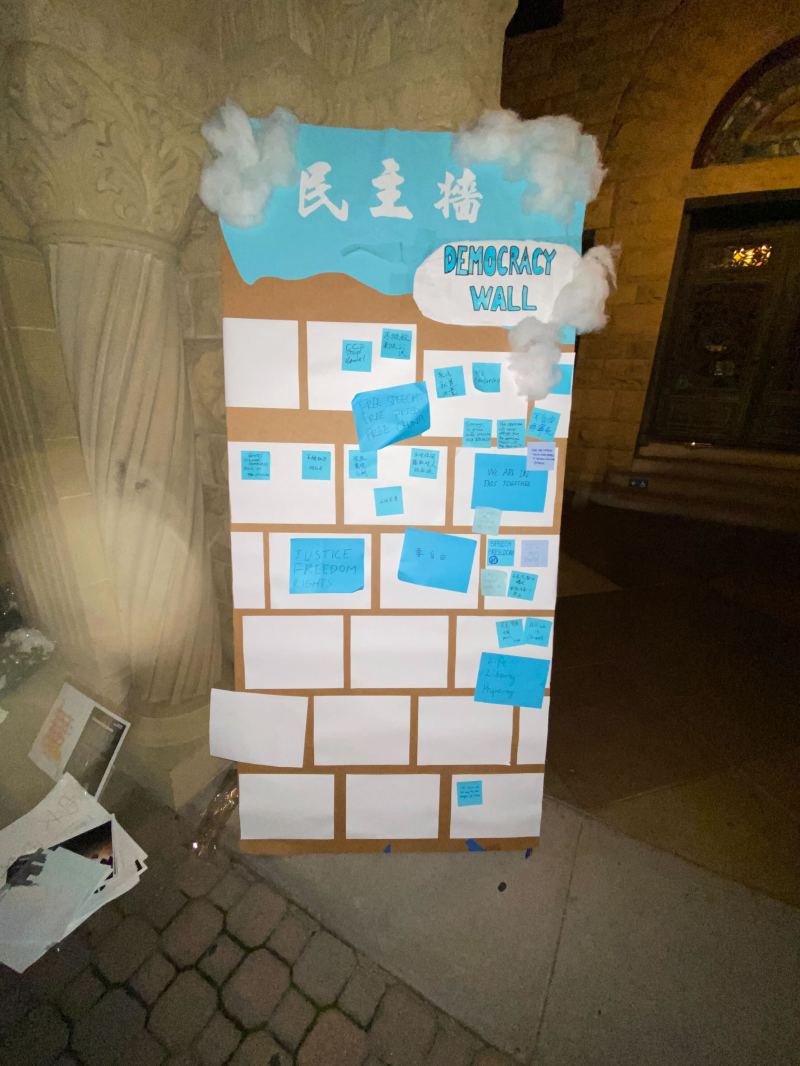“Gazing has power,” said Cindy M.S. ’24.
Cindy, who requested her last name be withheld due to fear of retaliation, was one of many who attended a vigil to honor the ten victims of the apartment fire in Urumqi (Ürümqi) on Nov. 30 in front of Memorial Church.
On Nov. 24, a fire broke out in a residential high-rise building in Xinjiang’s capital of Urumqi in China. Ten people were killed in the fire and nine were injured. Under China’s “zero COVID” policies, Urumqi has been under strict lockdown for the past three months. Fire responders weren’t able to reach the fire as quickly because of pandemic control barriers and cars abandoned by people who were put into quarantine. As a result of this incident and public anger over lockdown measures, unprecedented waves of protests have erupted in the Xinjiang region and in Beijing.
Other vigils were held on Tuesday in the Bay Area, including in San Jose and San Francisco, to commemorate the victims of the fire. The vigil in San Francisco drew upwards of a hundred people, according to KQED.
One of the organizers, who requested anonymity due to fear of exposure and risking the lives of their families, said, “Originally, we were just going to plan a place to provide candles and flowers for people so that they could mourn the lost lives.” However, news spread of the vigil and groups outside of the Stanford community came to share messages of support and hope the wave of protest would usher in change.
The vigil at Stanford was student organized and advertised across social media primarily to Stanford students, but many people outside of the Stanford community attended. Feng Congde and Palo Alto City Council Member Greg Tanaka attended and spoke in support of students and members of the Chinese community, while expressing their condolences to the victims of the fire. Congde was a student leader during the 1989 Tiananmen Square protests.
People with signs and candles gathered in front of Memorial Church to pay their respects to those that were lost. “Many cities in China are still on lockdown. Lots of people DIED in this process #Urumqi” read one sign. Many of the attendants wore hats, face masks and large scarves to shield their identities.
Noah ’26, an organizer of the vigil who requested anonymity due to fear of retaliation, said many Chinese international students feared their families in China would be harmed if their identities were revealed.
“We’re worried that people are going to snitch on us and send our information to the embassy, and then our parents back home might be affected,” he said. “There have already been numerous cases where Chinese students abroad organize protests or anti-government movements and their information was leaked to the government.”
There were speakers from the community that shared their own stories and experiences in China while onlookers bowed their heads in respect. Some shed tears while others silently held up blank sheets of paper, a symbol of protest and a measure of unity.
“We have a white paper because of the censorship. Because of the censorship, it’s like the information we want to say, but we cannot publish it on the internet,” Noah said. And because of the size of the paper being A4, the protests are sometimes referred to as the A4 Revolution. “What the authority sees in a blank paper is a word they’re fearing.”
Others, like Cindy, silently watched and offered their support as they listened to people sharing their words of grief, pain and hope for the future. Some hope that the protests will inspire change, especially among future generations.
“I think the common denominator here is that we come to commemorate these people,” said Tianyu Fang ’24.
